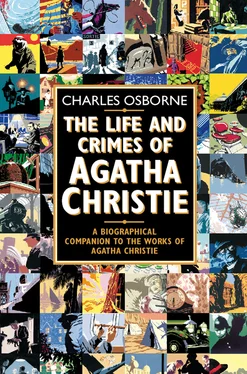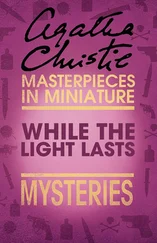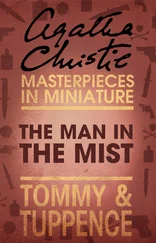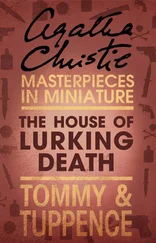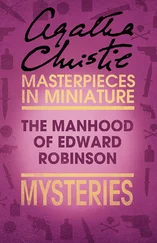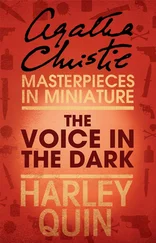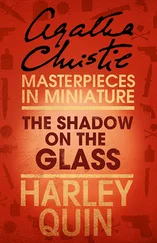The journey on the Orient Express, through France, Switzerland, Italy and the Balkans, was all that she had hoped it would be. After an overnight stay in old Stamboul, Mrs Christie crossed the Bosphorus into Asia and continued her train journey through Asiatic Turkey, entering Syria at Aleppo, and continuing south to Damascus. She spent three days in Damascus at the Orient Palace Hotel, a magnificent edifice with large marble halls but extremely poor electric light, and then set off into the desert by bus (the Nairn Line fleet of buses was operated by two Australian brothers, Gerry and Norman Nairn). After a forty-eight-hour journey which she found both fascinating and rather sinister because of the complete absence of landmarks of any kind in the desert, she finally reached her destination, the ancient city of Baghdad, capital of modern Iraq and of old Mesopotamia.
One of the first things Agatha did was arrange to visit the excavations at Ur, about halfway between Baghdad and the head of the Persian Gulf, where Leonard Woolley was in charge of the joint British Museum and Museum of the University of Pennsylvania Expedition. As Woolley’s wife Katharine, a formidable lady, was a Christie fan and had just finished reading The Murder of Roger Ackroyd with great enjoyment, the author was accorded special treatment and was not only allowed to remain with the digging team but was invited to join them again the following season. Having fallen in love with the beauty of Ur, and the excitement of excavating the past, Mrs Christie enthusiastically agreed to return. Meanwhile, she enjoyed the rest of her stay in Baghdad until, in November, it was time to go back to England. In March of the following year, 1930, travelling from Rome to Beirut by sea, she made her way back to Baghdad and to Ur.
This time, Agatha Christie met Woolley’s assistant, Max Mallowan, who had been absent with appendicitis on her first visit. Of mixed Austrian and French parentage, his father being an Austrian who had emigrated to England, Mallowan was a twenty-six-year-old archaeologist who had been Woolley’s assistant at Ur since coming down from Oxford five years previously. At the conclusion of Agatha’s visit, the imperious Katherine Woolley ordered young Mallowan to take their distinguished guest on a round trip to Baghdad and to show her something of the desert before escorting her home on the Orient Express. They enjoyed each other’s company and, by the time they arrived back in England, Mallowan had decided to ask Mrs Christie to marry him.
When he proposed to her, she was taken completely by surprise. They had become close friends, but that was all, and she was fourteen years older than he, she told him. Yes, he knew that, and he had always wanted to marry an older woman. She agreed to think about it, and although she had grave doubts as to the wisdom of marrying again, let alone marrying a man so much younger than herself, she did like him and they had so much in common. She consulted her daughter, Rosalind, who gave her unqualified approval. At the end of the summer, Agatha Christie said yes, and on 11 September 1930, after she returned from a holiday in the Hebrides, they were married in the small chapel of St Columba’s Church in Edinburgh.
The Orient Express took the newly married couple on the first stage of their honeymoon to Venice, whence they made their way to Dubrovnik and Split and then down the Dalmatian coast and along the coast of Greece to Patras in a small Serbian cargo boat. After a tour of Greece with a few idyllic days at Delphi, they parted in Athens, Max to rejoin the dig at Ur, and Agatha to return to London, suffering from an especially violent form of Middle Eastern stomach upset or possibly, as diagnosed by the Greek doctor she consulted, ptomaine poisoning.
In her autobiography, Agatha Christie writes that Murder at the Vicarage was published in 1930, but that she cannot remember where, when or how she wrote it, or even what suggested to her that she should introduce a new detective, Miss Marple. (As with The Murder on the Links, the title originally began with the definite article, which it lost in some later editions.) Mrs Christie claimed that it was certainly not her intention at the time to continue to use Miss Marple and allow her to become a rival of Hercule Poirot. It merely happened that way. Poirot was to remain her most frequently employed detective, appearing altogether in thirty-three novels, as well as ten volumes of stories, while Miss Marple was allowed to solve no more than twelve full-length mysteries. In the post-Second World War years, Poirot and Miss Marple novels tended roughly to alternate, but Miss Marple titles were thin on the ground in the earlier years. After her initial appearance in The Murder at the Vicarage in 1930, and in a volume of stories in 1932, Miss Marple is not heard of again until the end of the thirties.
The vicarage in The Murder at the Vicarage is in the small village of St Mary Mead, a village in which Miss Marple had always lived and from which she was rarely to stray for the rest of her life. She did not go out into the world in search of murder; it came to her. We are not meant to wonder at the fact that so much violence should be concentrated in so small and, in all other respects, so apparently innocuous a village, and indeed to wonder would be churlish. In her introduction to murder, in The Murder at the Vicarage, Miss Marple acquits herself well. Although she is not trained to detect crime, she is inquisitive, has a good memory, a rather sour opinion of human nature (though she would deny this) and a habit of solving problems by analogy. She does not possess little grey cells of the quality of Hercule Poirot’s, and when congratulated upon her success is likely to attribute it to the fact that she has lived in an English village all her life and thus has seen human nature in the raw.
The surface cosiness of village life, disturbed by violent crime and then found to be somewhat murky under the surface, is something which Agatha Christie is extremely adept at conveying. In The Murder at the Vicarage, one of the vicar’s more irritating parishioners, Colonel Protheroe, is found dead in the vicar’s study. There is no shortage of suspects, including the vicar himself who narrates the story, his flighty young wife, Griselda, and his teenage nephew, Dennis. The relationship between the vicar and his wife is amusingly presented. More likely suspects are the Colonel’s widow, his daughter, a slightly dubious anthropologist, and a mysterious Mrs Lestrange. Dr Haydock, Miss Marple’s physician and next-door neighbour, must be above suspicion as he is to appear in a number of later Miss Marple stories, and the same applies, surely, to Miss Marple’s nephew, Raymond West, a novelist and poet who writes the kind of novels and poems, all pessimism and squalor, which Miss Marple rather detests, though of course she is proud of her nephew’s reputation.
Like Poirot, Miss Marple is elderly when we first meet her in 1930, and over the next forty years she will age some more, but not as much as forty years. Agatha Christie based Miss Marple on the kind of old lady she had met often in west country villages when she was a girl, and described her also as being rather like the fussy old spinsters who were her grandmother’s ‘Ealing cronies’. With Agatha Christie’s grandmother, Miss Marple shared a propensity to expect the worst of everyone and, usually, to be proved right. She was to exhibit this propensity in twelve novels and twenty short stories.
The Murder at the Vicarage provides an auspicious début for Miss Marple, and a mystery which few of her readers will solve before the amateur sleuth of St Mary Mead even though Mrs Christie’s tactics are not dissimilar to those she adopted in her first novel. In later years, Agatha Christie professed to be less pleased with The Murder at the Vicarage than when she had written it, having come to the conclusion that there were far too many characters and too many sub-plots. But she still thought the main plot sound, and added, ‘The village is as real to me as it could be – and indeed there are several villages remarkably like it, even in these days [the early 1960s].’
Читать дальше
